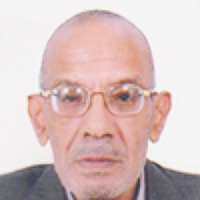Comparison of Lung Function of normal and persons with chronic low back pain and its relation with duration and severity of Chronic Low Back Pain
Published on: 13th October, 2017
OCLC Number/Unique Identifier: 7286424899
Introduction: Chronic low back pain is one of the most prevalent musculoskeletal disorders. Studies have shown certain relations between physical fitness and chronic low back pain (CLBP) by examine some measures of physical fitness. The aim of study was to measure lung function using winspiro PRO in patient with CLBP versus normal healthy individual, and relation of lung function with duration and intensity of CLBP.
Methodology: The study population is comprised of a total of 120 adult persons. 60 subjects with chronic low back pain (41 male and 19 female) with a mean age of 30.69 years (+4.34) and 60 normal individual (39 male and 21 female) with mean age of 29.00 years (+5.34).
Results:The result of comparison of the respiratory parameter forced vital capacity (FVC), and maximal voluntary ventilation (MVV) of individual with CLBP show a significant difference as compare to the normal healthy population. In unrelated ‘t’ test the patient with CLBP (N=60) of age 30.51(SD±4.33), height 169cm (SD±1.23), weight 57.86(SD±7.73) and body mass index (BMI) 20.46 (SD±2.54) show a significant difference in respiratory parameter FVC ( t=17.244, P=0.000), and MVV ( t=11.048, P=0.000) as compare to the normal healthy persons (N=60) of age 29.79 (SD±5.28), height 170cm (SD±1.13), weight 59.40(SD±6.97) and BMI 21.59 (SD±3.29).In patient group- FVC range is 34.0% to 75.00% (52.85%±9.30). MVV range is 45.0% to 86.80%. (63.11%±12.06)In control group FVC range is 63.90% to 98.83% (83.63%±7.59). MVV range is 63.00% to 98.00% (78.96%±7.86).
Conclusions:The overall result of the study show that there is a significant difference in the respiratory parameter that is FVC (forced vital capacity), and the MVV (maximum voluntary ventilation) in persons with chronic low back pain as compare to the healthy person of same age, height, weight and body mass index (BMI).
Prevalence of Musculoskeletal Disorders among Garment Workers: A Cross-Sectional Study in Bangladesh
Published on: 12th July, 2023
Background: The prevalence of musculoskeletal disorders is particularly high among garment workers, which poses a serious occupational health hazard. This issue is not taken seriously as an important issue in low-income countries like Bangladesh.Aim: Determine the prevalence of musculoskeletal conditions (MSDs) among garment workers in nine body regions and explore the relationship between MSDs and the general characteristics of the participants.Materials and methods: A cross-sectional study including 383 garment workers was done. A structured questionnaire (Standardized Nordic Musculoskeletal) was used. Results: The most common form of pain in the last year was lower back pain. Nine anatomical locations were studied, and workers most commonly experienced problems with their lower back (45.4%), upper back (36.6%), and knees (33.2%). Workers reported having more trouble in the knee (31.9%), upper back (35.0%), and lower back (43.9%) regions over the past seven days. In the past year and the last seven days, shoulder injuries were the least common. Conclusion: MSDs are widespread among garment industry employees. The back condition is the most commonly affected. The development of MSD is directly correlated with age and work experience.
The Cortisol Connection: Weight Gain and Stress Hormones
Published on: 28th March, 2024
Weight gain can be good or bad for health. Benefits include increased health for overweight people, disease or surgical recovery, and more. Health concerns, joint and musculoskeletal disorders, respiratory issues, metabolic abnormalities, cardiovascular health, psychological impact, reduced mobility, digestive troubles, hormonal changes, and cancer risk are negative impacts. Weight gain outcomes depend on heredity, weight distribution, and health. Maintaining a healthy weight needs a balanced diet, regular exercise, and stress management. A doctor or nutritionist can offer personalized weight management advice. Stress chemicals like cortisol trigger weight gain. ACTH stimulates adrenal glands to release cortisol, which increases hunger, fat storage, insulin resistance, and muscle loss. Understanding how stress hormones like cortisol affect weight gain is vital to reducing chronic stress’s health risks. Stress reduction, a balanced diet, regular exercise, proper sleep, social support, and professional treatment can mitigate these outcomes. Ultimately, stress hormones like cortisol can cause weight gain, but a holistic strategy tackling physical and psychological stress can help people maintain a healthy weight.
Enhancing Physiotherapy Outcomes with Photobiomodulation: A Comprehensive Review
Published on: 23rd July, 2024
Physiotherapy treatments employ complex approaches tailored to the patient’s diagnosis. Exercise is the primary strategy to enhance rehabilitation processes for most individuals. However, electrophysical agents, such as Photobiomodulation (PBM), that utilize specific wavelengths of light to penetrate tissues and stimulate cellular activity, can modulate various biological processes and may improve physiotherapy outcomes. This non-invasive treatment can reduce pain and inflammation, promote tissue repair, and accelerate tissue healing. Currently, PBM has numerous applications, including pain and inflammation treatment, wound healing (such as diabetic foot ulcers, pressure ulcers, post-surgery wounds, and skin grafts in burn injuries), and the management of musculoskeletal disorders (such as arthritis, tendinopathies, muscle injuries, and spinal disorders). It is also utilized to improve muscle performance and recovery in rehabilitation and sports. Additionally, transcranial PBM has shown promise in enhancing neurorehabilitative processes by facilitating the recovery of cognitive and motor functions in various types of lesions. The safety and efficacy of this treatment allow it to be incorporated alongside regular exercises and manual therapies as an adjunctive treatment, potentially enhancing outcomes in different areas of rehabilitation.
Rapid Upper Limb Assessment (RULA) and Rodgers Muscle Fatigue Analysis (RMFA) of Dentists using Optical Microscope, Loupes, or No Magnification during Endodontic Access: A Pilot Study
Published on: 29th August, 2024
Dentistry is a challenging and demanding physical profession, and this impacts not only the quality of the task outcomes but also the professional’s quality of life. The nature of dentistry demands prolonged static and awkward seated postures, frequent motions, positioning struggles, and working distances to the oral cavity for strategic procedure management, which become cumulative challenges over the working days, prone to discomfort, pain, or injuries, and musculoskeletal disorders for the operator.The limitations of the naked eye in dentistry, particularly in terms of visual information and resolution, underscore the need for visual aids. These aids are crucial for achieving the precision required for accurate procedures. Also, visual aids, such as magnifying loupes and the operative microscope, have been in the market for a while, and their proper use has shown ergonomic benefits that promote a neutral working posture and changes in work practice-oriented to control unbalanced awkward posture and motions.In this study, the Rapid Upper Limb Assessment RULA compares the posture between naked-eye dentistry, conventional loupes, and operative microscope, and with the observational assessment, determine the risk of developing musculoskeletal disorders and the need for priority of change. The Rodgers muscle fatigue analysis RMFA is used to predict fatigue in the muscular regions of the body during specific dental tasks.
Organizational and Human Factors in Dentistry: A Macroergonomic Approach to Maximize Dental Practice Performance and Minimize Burnout and Psychophysical Stress
Published on: 16th December, 2024
The psychophysical impact of a high-complexity environment such as the dental office is not a novelty. This article outlines the organizational and human factors that impact the overall health of dentists, assistants, hygienists, and administrative staff. A careless organizational and human factors approach cannot only function as a stress and error trigger but also affect the highly precise requirements of dentistry and task performance in the daily demands of the office. Ergonomics and human factors principles guidelines should be structured and taught from the basics in dental schools and supported by prevention programs and interventions in the dental professional field, as in other industries, to promote safety, health, and efficiency within the integration of humans, systems, and environments.Usually, the main focus of dentistry research is the physical aspect of the job; the high rates of musculoskeletal disorders are a real problem, but the cognitive-organizational element of the job is not a minimal issue, which highly contributes to physical-emotional exhaustion in the work environment.A fatigued mind impacts the physical aspect of the job, and physical fatigue impacts the mental aspect of the job. This dual effect in a job that requires dealing with anxiety and fear patients, administrative situations in the office, financial aspects, and technical and skill aspects from the dentist, among other requirements, makes dentistry a unique profession.This article addresses the components of the factors that promote cognitive depletion in our field and provides simple tips on controlling them to avoid burnout among dentists. It highlights the importance of awareness of how we manage the organization in the office and the effect on human behavior and performance. It wants to bring to light a common problem for dental practitioners and the workforce to prevent health and performance decrease.




